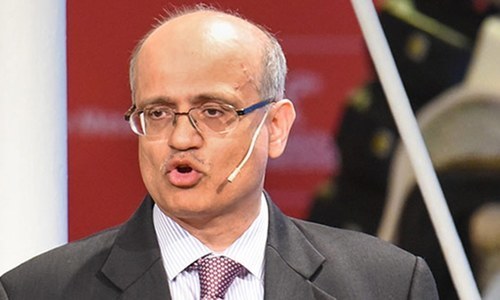Foreign journalists find holes in Indian narrative on F-16 usage, Balakot strike

New Delhi's narrative on the India-Pakistan standoff appeared to crumble further on Wednesday as foreign journalists unearthed new details about the events of the preceding weeks.
New York Times journalist Maria Abi-Habib on Wednesday revealed that, contrary to India's insistence, Pakistan may not have necessarily violated its F-16 sales agreement with the US even if it may have used the American-made fighter jets to shoot down Indian aircraft last week.
On Feb 27, Pakistan Air Force had announced that its jets had flown into occupied Kashmir to demonstrate its capability to respond to Indian aggression, locked on to military targets, and then spared them. It had later shot down two Indian aircraft inside Pakistani airspace when they tried to give chase to Pakistani jets.
Indian officials, while admitting that Pakistani jets had engaged Indian military targets, had complained that the aircraft used by the PAF to ingress into occupied Kashmir had included an F-16. The Indian Air Force (IAF) had also claimed that it shot down the said F-16, and paraded the remains of an AIM-120 missile in an attempt to substantiate its claim.
Read: India refuses to share proof of air strikes in Balakot
New Delhi had insisted that Pakistan's use of F-16 against India meant that Islamabad stood in violation of a sales agreement with the US, which reportedly restricts the fighter jets to be used for anti-terrorism activities alone.
However, Abi-Habib, the NYT's South Asia correspondent, in a series of tweets explained how Pakistan may not have committed a violation of its sales agreement with the US even if it did use F-16s to shoot down Indian jets (which the PAF nonetheless says never happened).
"The US says if Pakistan used an F-16 to shoot down an Indian MiG, it may not have violated sale agreement," she tweeted.
"They say if India entered Pakistani airspace for a second day, and Pakistan used the jet defensively, the contract wasn't violated. But, if Pakistan used an F-16 to attack India first, then deal was violated."
Citing weapons experts and officials, Abi-Habib also put a question mark on Indian Air Force's claim that the AIM-120 missile's remnant that was displayed by New Delhi was 'proof' of Pakistan's use of an F-16 in the counter-strike to the Balakot incident.
She also said US officials still do not have sufficient reason to believe that an F-16 was shot down by India, as claimed by IAF.
Abi-Habib noted that "the West, particularly US, is really trying to bolster its alliance with India". She said that the strengthening of its alliance with New Delhi is so important for Washington that it even offered to produce F-16 jets in India "as a sweetener".
For the US to be cautious with Indian version of last week's events, despite its newfound fondness of India, "is very interesting", she added.
Satellite image of 'areas hit' by IAF show virtually no change
More damaging for the Indian narrative was a report penned by Martin Howell, Gerry Doyle and Simon Scarr for Reuters.
The report cited new high-resolution satellite images of the buildings and infrastructure India claimed it had targeted and destroyed in Balakot, allegedly killing scores of militants, to demonstrate that what India claims may never have happened.
The new image, produced by Planet Labs Inc, a San Francisco-based private satellite operator, showed that the "biggest training camp of Jaish-e-Mohammad (JeM)" that the Indian Air Force claimed to have struck last week — which, according to locals, is a seminary for children — appears "to be still standing".
The Reuters report said that according to the latest image it had acquired, when compared to an April 2018 satellite photo of the same area, the infrastructure remains "virtually unchanged".
The news agency says that the development, to which India's foreign and defense ministries did not respond to, casts further doubt on claims made by Indian Prime Minister Narendra Modi that the Indian Air Force had successfully hit all its intended targets.
Today's developments follow earlier reports by foreign publications that had found no trace of mass casualties and bodies in the area New Delhi claimed it had bombed inside Pakistan.
On a visit to the raid site a day after the incident, Reuters' reporters had found some bomb craters and splintered pine trees but just one confirmed victim, who had a cut above his right eye.
“They say they wanted to hit some terrorists. What terrorists can you see here?” 62-year-old Nooran Shah told the agency. “We are here. Are we terrorists?”
Reuters' findings were consistent with those of an Aljazeera representative's. The Qatari publication's reporter had found "splintered pine trees and rocks strewn across blast craters" but "no evidence of any building debris or casualties".














































